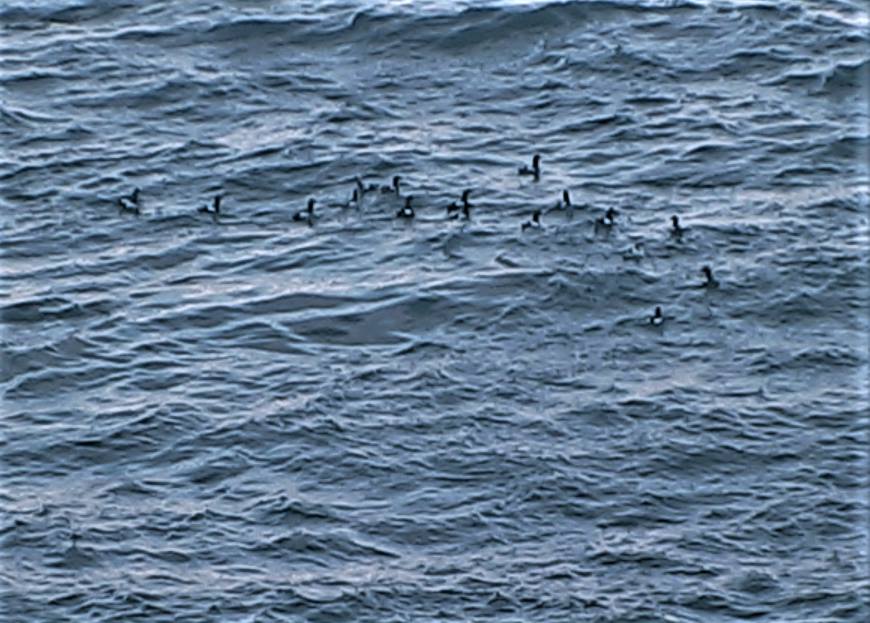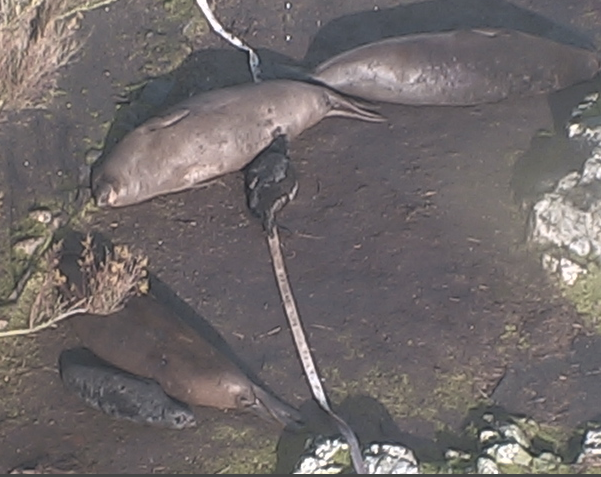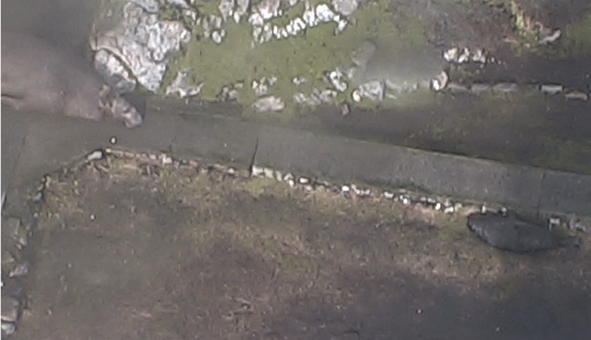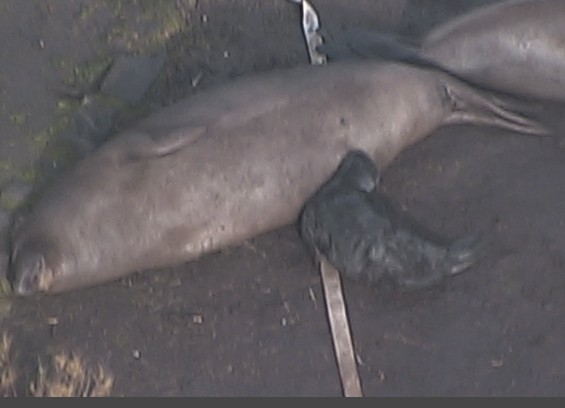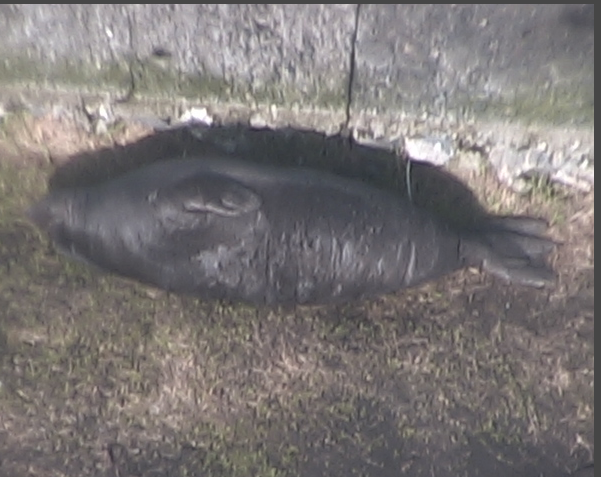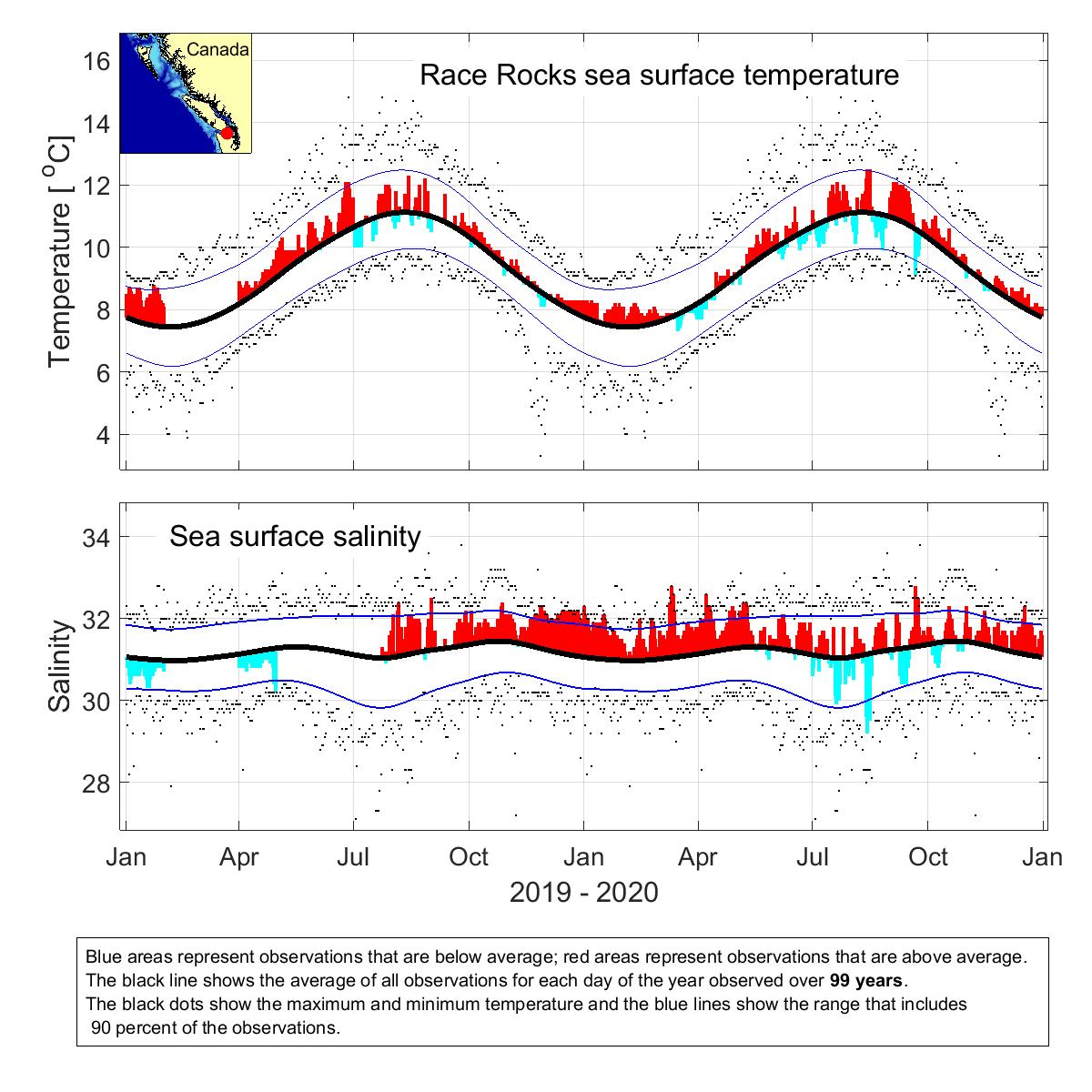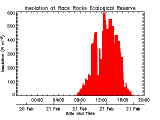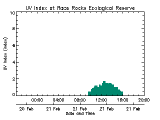Pam Birley from England took this image on the remote camera 5 today. Almost yearly, she has spotted peregrines on Great Race Rocks using the remote control cameras .
Author Archives: Garry Fletcher
Seawater Data February, 2021
| Daily Sea Surface Temperature and Salinity Observations | |||||
| Station: | Race Rocks | ||||
| Observer: | Rod King | ||||
| Month: | Feb-21 | ||||
| Day | Time | Temp °C | Sal ppt | ||
| 1 | 16:00 | 8.1 | 31.3 | ||
| 2 | 8:30 | 7.9 | 31.7 | ||
| 3 | 16:30 | 8.1 | 31.3 | ||
| 4 | 8:30 | 7.9 | 31.5 | ||
| 5 | 16:00 | 8.9 | 31.3 | ||
| 6 | 9:00 | 8.1 | 31.3 | ||
| 7 | 11:30 | 8 | 31.4 | ||
| 8 | 9:00 | 7.8 | 31.4 | ||
| 9 | 8:30 | 7.6 | 31.5 | ||
| 10 | 8:30 | 7.9 | 30.4 | ||
| 11 | 11:30 | 7.5 | 31.3 | ||
| 12 | 13:00 | 7.7 | 31.3 | ||
| 13 | 11:00 | 7.2 | 31.2 | ||
| 14 | 15:30 | 7.2 | 31.6 | ||
| 15 | 15:30 | 7.4 | 31.6 | ||
| 16 | 9:00 | 7.5 | 31.3 | ||
| 17 | 8:40 | 7.5 | 31.3 | ||
| 18 | 8:40 | 7.5 | 31.2 | ||
| 19 | 8:20 | 7.5 | 31.2 | ||
| 20 | 10:02 | 7.5 | 31.2 | ||
| 21 | 8:15 | 7.5 | 31.5 | ||
| 22 | 9:00 | 7.7 | 31.5 | ||
| 23 | 10:55 | 7.5 | 31.4 | ||
| 24 | 10:21 | 7.4 | 31.4 | ||
| 25 | 18:00 | 7.7 | 31.5 | ||
| 26 | 13:52 | 7.9 | 31.9 | ||
| 27 | 9:00 | 7.6 | 31.6 | ||
| 28 | 13:30 | 7.8 | 31.6 | ||
| 29 | |||||
| 30 | |||||
| 31 | |||||
Why are the Waters around Race Rocks so Nutrient Rich?
The productivity of the waters passing by Race Rocks contributes to the high biodiversity and abundance of organisms in the area. Part 5 of the following journal article provides a clue for the incidence of high Nitrogen level throughout the Strait of Juan de Fuca.
Influences of the Juan de Fuca Eddy on circulation, nutrients, and phytoplankton production in the northern California Current System
5. Regional Effects of the Juan de Fuca Eddy
5.1. Nutrient Enrichment of the Northern CCS
[44] The Juan de Fuca Eddy has been described as an “upwelling center”, allowing water to be raised from deeper depths than in classical wind‐driven upwelling [Freeland and Denman, 1982]. Upwelling in the eddy enriches the deep waters that flow into Juan de Fuca Strait as part of the estuarine circulation return flow. The penetration into the strait of this nutrient‐rich water mass is evident in a vertical section of ambient nitrate concentration measured in September 2003 (Figure 13). At the mouth of the strait, nitrate concentrations below 100 m (the approximate depth of the division between inflow and outflow) are >34 μM. Similar concentrations are present in bottom water along the strait axis, reaching ∼150 km east of the Strait entrance where strong mixing in shallow regions of high tidal currents mixes them upwards.

Figure 13
Vertical section of nitrate concentration measured in an along‐axis Juan de Fuca Strait transect (18 September 2003). Station names are across the top of the section and geographically in the insert figure. Continue reading
Feb14 Census
Census:
Gulls: 70
Cormorants: 215
Eagles: 0
California Sea Lions: 62
Steller Sea Lions: 97
Elephant Seals: 6
Harbour Seals: 0
Turnstones: 11
Geese: 4
Pigeon Guillemots Return to Nesting Grounds.
Elephant Seals From the Remote Control Camera
This year, so far there has been a very successful set of births of Elephant seals at Race Rocks. This is the 13th year that Elephant seals have been breeding and having births in the ecological reserve. Currently three females and four pups along with a large male can be seen from the remote-controlled camera 1 from the top of the tower:
Seawater Temperatures and Salinities at Race Rocks 2019-2020
Recent Changes and Updates on this website
A year ago , we lost the services of storage on a Telus service without any warning. As a result all files, photos and documents, which had URLs starting with racerocks.com were not accessible, but fortunately I had a backup, so now I have been gradually getting caught up in transferring several hundred items to this wordpress site which now carries the racerocks.ca archives.
Some of the more significant files which have been updated are as follows:
- The Race Rocks Species list and Image Gallery- species photographed at Race Rocks
- Weather and Physical factors at Race Rocks– all the abiotic factors pages have been redone– example: tidal currents: and wind
- Media Coverage of Race Rocks stories
- Archive of Events at Race Rocks
- .The History of the Development of the racerocks.com millenium Project
- The Situation with MPA status for Race Rocks
- Archives of the Tidal Energy project
- The Contributions of Pam Birley of Leicestershire England
- Current and Archived Video
- Archival records 1859-1906
- A translate dropdown menu has been added to the top of most pages and it should always be embedded at the top of the log posts if one logs in from the URL racerocks.ca
- Two archival files from the 1980s and 1990s have been added recently; The Salmon Enhancement Activity and CoastWatch program activity
- Transects for Environmental Monitoring at Race Rocks
Investigations on Correlations
Questions on whether or not there are correlations in nature between two or more observed events can often be an idea for interesting investigations. Here are some examples:
Solar radiation and UV levels
- Solar radiation in a day
- uv radiation in a day
- In graphs aboveof a sunny day in late February both UV and Solar show a rise at the same time of day .. However check at other times of the year in the records at http://www.victoriaweather.ca/station.php?id=72 to answer the question about whether there is always a correlation between these two abiotic factors.
- Temperature and salinity: : examine this graph and see if you can make some conclusions about the correlation between seawater temperature and salinity , or between temperature and any of the other factors shown in the weather station graphs
- Wind speed and barometric pressure : here you might look for examples of negative correlations– in the file from the race rocks weather station http://www.victoriaweather.ca/station.php?compare wind and barometric pressure data,
- Link to the satellite page from the Physical factors page to the satelite page, and on it go to the Weather Model – North Pacific Surface Pressure and Wind website . Track one of the low barometric pressure circles across the Pacific and predict what effect it will have on wind in 6 or 12 hours.. This works especially well in the winter months
- Go to the pages of photographs done by Pam Birley taken on the Race Rocks cameras. Since they are published by the month, look for correlations in her observations . Are all species always seen at the same time of the year, ie does presence correlate with season. See if you can use her pictures to show presence/absence of migratory or resident species and correlate that with seasons.
Christmas Bird Counts 2017-present year
Records for 2017 to 2020–
THE ANNUAL CHRISTMAS BIRD COUNT AT RACE ROCKS
This data below may be highlighted, copied and pasted to an open EXCEL file. It will then be usable for statistical manipulations and graphing exercises.Some of the records reflect seabirds observed on the trip from Bentinck Island out while on the boat. Due to inclement weather ( that means a wind above 15 knots from the north East usually, ) In 2018 and 2019 observations were carried out from Great Race Rock Island only, and the surrounding area visible from there.
Linked below are the count returns by year. Included are some of the photographs taken of the members by those who were able to make it out for the counts, –Garry Fletcher
See this link for all past bird counts
2020_ Matthew and Courtney Cameron
2019- Nick Townley ( stormy- observed from land only)
2018- Alex Fletcher (stormy , observed from land only)
| SPECIES | 2018 | 2019 | 2020 | 2021 | 2022 | 2023 | 2024 | 2025 | ||||||||
| Double Crested Cormorant | 10 | 20 | 208 | 10 | – | |||||||||||
| Brandt’s Cormorant’s | 14 | 50 | ? | 750 | ||||||||||||
| Pelagic Cormorant |
18 | 75 | 59 | 20 | ||||||||||||
| Common Murre | 1* | 3500 | 0 | 25 | ||||||||||||
| Rhinocerous Auklet | 0 | 4 | 0 | 0 | ||||||||||||
| Black Oystercatcher | 42 | 24 | 4 | 0 | ||||||||||||
| Black Turnstone | 59 | 38 | 42 | 50 | ||||||||||||
| Surfbird | 0 | 0 | 18 | 0 | ||||||||||||
| Dunlin | 0 | 0 | 0 | 6 | ||||||||||||
| Ruddy Turnstone | 0 | 0 | 0 | 0 | ||||||||||||
| Sanderling | 0 | 0 | 0 | 0 | ||||||||||||
| Pigeon Guillemot | 10 | 0 | 0 | 30 | ||||||||||||
| Marbled Murrelet | 0 | 0 | 0 | 0 | ||||||||||||
| Ancient Murrelet | 0 | 90 | 0 | 0 | ||||||||||||
| Pacific Loon | 0 | 40 | 0 | 0 | ||||||||||||
| Common Loon | 2 | 1 | 0 | 0 | ||||||||||||
| Red Throated Loon | 0 | 1 | 0 | 0 | ||||||||||||
| Canada Goose | 0 | 12 | 0 | 5 | ||||||||||||
| Harlequin Duck | 10 | 10 | 6 | 0 | ||||||||||||
| Long-tailed duck | 0 | 0 | 0 | 0 | ||||||||||||
| Bufflehead | 0 | 0 | 0 | 0 | ||||||||||||
| Surf Scoter | 55 | 4 | 0 | 0 | ||||||||||||
| Common Goldeneye | 0 | 0 | 0 | 0 | ||||||||||||
| White winged Scoter | 0 | 3 | 0 | 1 | ||||||||||||
| Red-breasted merganser | 18* | 2 | 0 | 0 | ||||||||||||
| Common Merganser | 0 | 0 | 0 | 0 | ||||||||||||
| Hooded Merganser | 0 | 0 | 0 | 0 | ||||||||||||
| Red-necked grebe | 0 | 0 | 0 | 0 | ||||||||||||
| Horned Grebe | 1 | 0 | 0 | 0 | ||||||||||||
| Harlequin Duck | 10 | 10 | 6 | 5 | ||||||||||||
| Mew Gull | 14 | 800 | 48 | 3 | ||||||||||||
| Thayer’s (Iceland) Gull | 8 | 150 | 281 | 75 | ||||||||||||
| Herring Gull | 0 | 0 | 0 | 2 | ||||||||||||
| Ring-billed Gull | 0 | 0 | 0 | 0 | ||||||||||||
| Heermann’s Gull | 0 | 0 | 0 | 0 | ||||||||||||
| Iceland Gull | 0 | 0 | 0 | 0 | ||||||||||||
| California Gull | 0 | 0 | 0 | 0 | ||||||||||||
| Western Gull | 0 | 0 | 0 | 1 | ||||||||||||
| WesternXGlaucous-Winged Gull | 2 | 1 | 0 | 0 | ||||||||||||
|
Glaucous-Winged Gull
|
69
|
250
|
0
|
10
|
||||||||||||
| Harlequin Duck | 10 | 10 | 6 | 0 | ||||||||||||
|
Bonapartes Gull
|
0
|
0
|
0
|
0
|
||||||||||||
| Rhinocerous Auklet | 0 | 0 | 0 | 0 | ||||||||||||
| Merlin | 0 | 0 | 0 | 0 | ||||||||||||
| Peregrine Falcon | 0 | 0 | 0 | 0 | ||||||||||||
| Bald Eagle, Immature. | 0 | 0 | 5 | ? | ||||||||||||
| Bald Eagle, adult | 4 | 10 | 25 | 15 | ||||||||||||
| Killdeer | 0 | 0 | 0 | 0 | ||||||||||||
| Rock Sandpiper | 0 | 0 | 0 | 0 | ||||||||||||
| Western Sandpiper | 0 | 0 | 0 | 0 | ||||||||||||
| Black Bellied Plover. | 0 | 0 | 0 | 0 | ||||||||||||
| Red-necked Phalarope | 0 | 0 | 0 | 0 | ||||||||||||
| American Pipit | 0 | 0 | 0 | 0 | ||||||||||||
| European Starling | 0 | 0 | 0 | 0 | ||||||||||||
| Song Sparrow | 0 | 1 | 0 | 0 | ||||||||||||
| Fox Sparrow | 0 | 0 | 1 | 0 | ||||||||||||
| Savannah Sparrow | 0 | 0 | 0 | 0 | ||||||||||||
| Snow Bunting | 0 | 1 | 0 | 0 | ||||||||||||
| North Western Crow | 0 | 0 | 0 | 0 | ||||||||||||
| Raven | 0 | 2 | 2 | 1 | ||||||||||||
| Brown Pelican | 0 | 0 | 0 | 0 | ||||||||||||
| Great Blue Heron | 0 | 0 | 0 | 0 | ||||||||||||
| SPECIES | 2017 | 2018 | 2019 | 2020 | 2021 | 2022 | 2023 | 2024 | 2025 | |||||||




